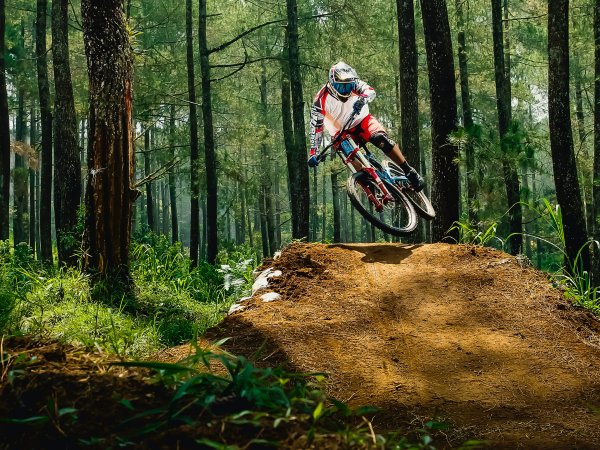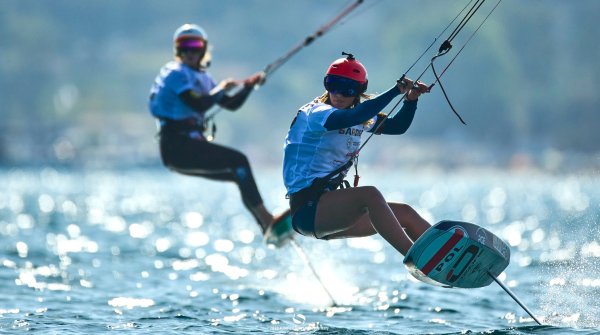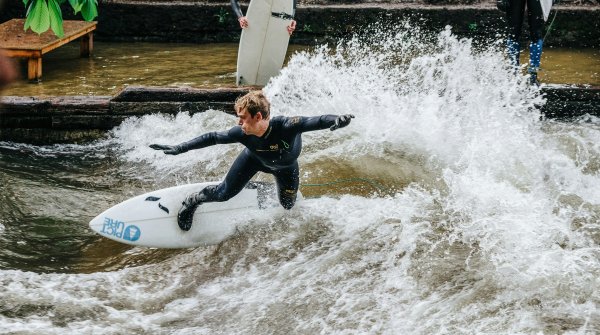Anyone who attended the European Championships in Munich in August 2022 was able to experience just how much sport can unite people. For many, "Munich 2022" was one of the best major sporting events Germany has had to offer in recent years. One reason for this - besides the grandiose setting in historic competition venues - was the fusion of traditional sports with action and trend sports in the city. In the BMX Park on the Olympiaberg, the audience was carried away by the spectacular tricks. Party atmosphere also on the Königsplatz at climbing and bouldering or in the Olympiapark at MTB Cross Country - despite continuous rain. The event showed how much action sports fascinate and euphorize the mainstream. There is no longer any trace of a niche. But how does THE action sport define itself? How has it developed and how does it fit into today's society and the increased demand for environmental protection and sustainability? ISPO.com tries to provide answers.
To anticipate the first answer right away: There is no such thing as THE action sport. Just as there is no exact classification into trend or fun sports. For sports science, action sports are a subsection of extreme sports. Often, however, the boundaries are fluid. Even a 5-kilometer run can quickly become a trend sport, action sport, extreme sport, thrill sport or soul sport, depending on the setting.
How a small movement develops into a trend and later into an action sport that has become indispensable in the mainstream can be described using the example of snowboarding. As with most trends, it was active people from other sports who tried their hand at a new form of movement. In 1965, the first "board" was developed in the USA. The idea: to experience the feeling of surfing even in the snow. The pioneers Tom Sims and Jake Burton set a whole lifestyle avalanche rolling with their enthusiasm. In the late 1970s, the first snowboarders appeared in traditional ski resorts, but initially met with fierce resistance there. But bans couldn't stop the trend. At the 1998 Winter Olympics in Nagano, snowboarding became an Olympic sport for the first time - and thus arrived in the mainstream. Skateboarding and mountain biking have taken on very similar developments.
What many action sports have in common is that they have developed out of scenes shaped by youth culture. Virtuosity is a very decisive characteristic here. The fascination with unusual movements and body positions, the joy of experimentation and creativity, and individualization play an immense role in action sports. Stylization is at least as important, because action sports are often associated with specific lifestyles that express themselves, for example, through certain values, rituals, and styles of speech and dress. Add to this a bit of counter-movement and rebellion to already established sports - and the new trend is ready. At the latest when an industry grows out of the subcultural scene and sponsors get involved, action sports are no longer just a niche. Here, Red Bull in particular has given wings to action sports: No snowboard event without party culture and product advertising, no professional competitions without an effervescent boost.
Many sports enthusiasts attach central importance to adrenaline - in action sports, this is often an element that makes up the fascination. Added to this is the urge for freedom and individualization, which has become increasingly valuable in recent years, also thanks to social media. And our mobility additionally ensures that we have more options today than ever before: surfing and kiting on the most beautiful beaches, snowboarding in untouched deep snow, or mountain biking in the most remote forests. The options are there, so let's take advantage of them. And this is exactly where the discussion about sustainability and environmental protection comes into play in action sports. When asked whether snowboarding is not harmful to the environment, Ulrike Pröbstl-Haider, Professor of Landscape Development, Leisure and Tourism at the University of Natural Resources and Applied Life Sciences in Vienna, replies: " Winter sports tourism is not the biggest problem. If you board an airplane or a cruise ship as a tourist, you have a much worse eco-balance. In contrast, ski tourism is downright sacred." Nevertheless, snowmaking and preparing the slopes eat up an enormous amount of electricity and gasoline, not to mention the mass travel by car. But what are the alternatives? Is there such a thing as "green" action sports?
In fact, there is such a thing as "green" action sports. In parkour, for example, you just use what's right outside your front door anyway. The same goes for skateboarding or biking. Okay, resources have to be raised to build skate or BMX parks, but skateboarding and BMX still leave a very small carbon footprint. City and community planners have long known how important such offerings are and are therefore expanding them. But a "gap jump," "kickflip" or "180 bunny hop" just aren't for everyone. Many seek thrills in snowboarding, kiting or surfing. Or ski touring, but even these are not without their flaws due to the journey and the disturbance of wildlife. That's why, in the end, you may be left with the wisdom that often helps in many situations in life: less is sometimes more.
Maybe you don't have to drive to the ski resort every weekend in winter. And sure, surfing in Fuerteventura, Egypt or Bali is fun. But what are the spots nearby? Surfing is also possible on the North Sea coast, windsurfing, kiting or foiling even on the nearest lake. Liber use short distances and arrive by train instead of by car or plane. For surfers, more and more metropolises are now creating opportunities on site and building artificial facilities that generate waves by electricity from the photovoltaic system.
There are always alternatives and they will become more in the coming years. That's because conscious action and sustainable thinking are on the rise, and what's more, they're already part of (youth) culture. According to a recent, representative survey by Jochen Schweizer, a company that earns money with action, thrills and travel experiences, around 44 percent of the Germans surveyed have already adapted their travel behavior in favor of sustainability.
Pleasure, thrill and freedom are part of the action sports lifestyle, and will remain so. Action sports are fun, create experiences and, last but not least, are a great market. Where it is not yet sustainable, each and every active person and even event organizers can make it a bit "greener". Munich 2022 has shown that even major sporting events can be thought of differently than in the past.
- ISPO awards
- Mountain sports
- Bike
- Design
- Retail
- Fitness
- Health
- ISPO Job Market
- ISPO Munich
- ISPO Shanghai
- Running
- Brands
- Sustainability
- Olympia
- OutDoor
- Promotion
- Sports Business
- ISPO Textrends
- Triathlon
- Water sports
- Winter sports
- eSports
- SportsTech
- OutDoor by ISPO
- Heroes
- Transformation
- Sport Fashion
- Urban Culture
- Challenges of a CEO
- Trade fairs
- Sports
- Find the Balance
- Product reviews
- Newsletter Exclusive Area
- Magazine







